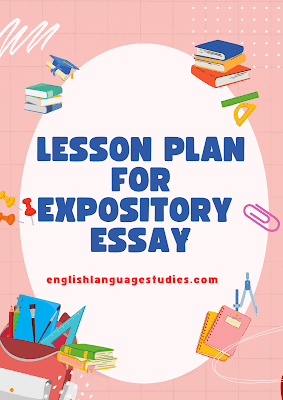Helping Students Explain, Inform, and Explore with Clarity
Grade Level: 7–10
Duration: 2–3 Class Periods (45–60 minutes each)
Subject: English Language Arts
Focus: Expository Essay Writing
Objectives:
By the end of this lesson, students will be able to:
- Understand the structure and purpose of an expository essay
- Choose a topic and narrow it to a focused idea
- Organize ideas logically using appropriate transitions
- Write a clear thesis and support it with factual information
- Draft, revise, and edit an expository essay
Materials Needed:
- Sample expository essays
- Projector or whiteboard
- Graphic organizer (intro-body-conclusion)
- Expository writing checklist
- Essay rubric
Day 1: Introduction to Expository Writing
Hook:
Ask: “Have you ever taught someone how to cook, play a game, or fix something?” That’s expository writing—explaining or informing.
Mini-Lecture:
Explain that expository writing is used to inform, explain, describe, or define a topic. Emphasize the neutral and factual tone.
Structure Includes:
- Introduction (hook + thesis)
- Body Paragraphs (facts, examples, explanations)
- Conclusion (summary + final thought)
Class Activity:
Identify the purpose and structure of a sample expository essay. Highlight the thesis and supporting details.
Day 2: Planning & Drafting
Step 1: Topic Selection & Brainstorming
Give students prompts such as:
- Explain how photosynthesis works.
- Describe the steps in planning a trip.
- Inform the reader about the benefits of regular exercise.
Students choose a topic and use a graphic organizer to:
- Write a strong thesis
- List 2–3 supporting points
- Add facts, examples, or how-to steps
Step 2: Writing the First Draft
Students write:
- Introduction with hook and thesis
- Body paragraphs with clear topic sentences
- Conclusion that restates thesis and gives closure
Day 3: Editing, Peer Review & Final Draft
Peer Review:
Swap essays. Use a checklist to evaluate:
- Clarity of explanation
- Logical organization
- Factual support
- Transitions and coherence
Revisions:
Students revise based on peer feedback. Teacher provides mini-conferences as needed.
Optional Activity:
Turn essays into “How-To” posters or infographics for classroom display.
Assessment:
Final essays are assessed using a rubric that measures:
- Clarity and accuracy of information
- Organization and structure
- Use of examples and explanations
- Grammar and conventions
Conclusion:
Expository writing equips students with the skills to inform and explain clearly—crucial for academic success and real-world communication. This lesson guides them step by step, from brainstorming to final draft.
Lesson Plan: Nouns for A1 and A2 Levels
Lesson Plan: Pronouns for A1 and A2 Levels
